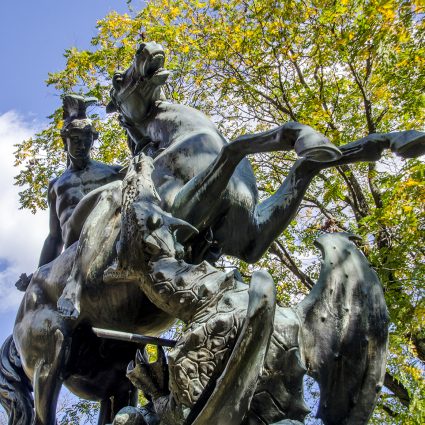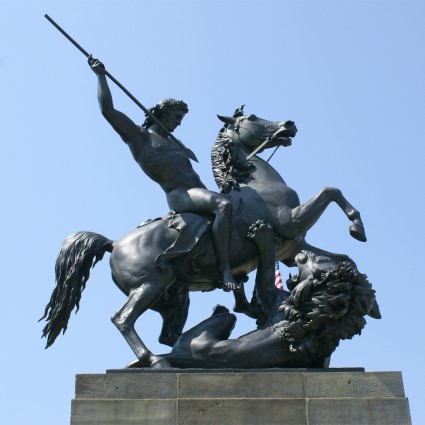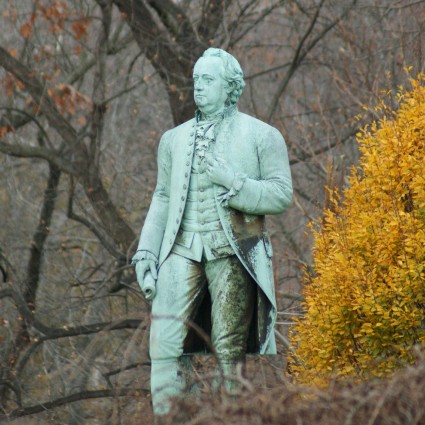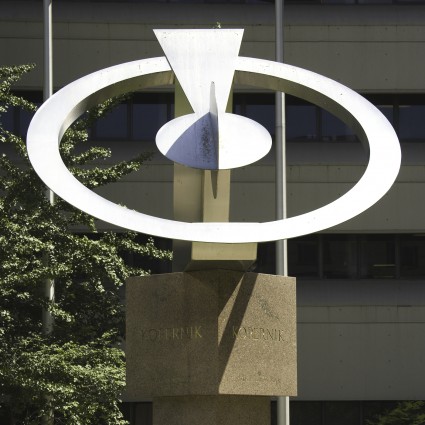At A Glance
An important symbol of Germanic culture, Humboldt was one of the earliest Western scientists to investigate links between human behavior and the larger natural environment
Charles Darwin called him “the greatest scientific traveler who ever lived”
Commissioned by Philadelphia’s German Citizenry and unveiled as part of the 1876 Centennial celebrations
Records indicate it was among the first statues erected in Fairmount Park
One of the most preeminent Europeans of his day, Alexander von Humboldt (1769-1859) was a naturalist, astronomer, explorer, geographer, politician, and diplomat. Humboldt was an important symbol of Germanic culture, and one of the earliest Western scientists to investigate links between human behavior and the larger natural environment. A decade after his death in 1859, plans for a memorial were underway, spearheaded by Philadelphia’s German citizenry. The Humboldt Monument Committee appointed J. Henry Horstmann, an active early Board Member of the Fairmount Park Art Association (now the Association for Public Art), to seek out German artists for the commission. Horstmann, who was instrumental in securing both Albert Wolff’s Lion Fighter and August Kiss’s Mounted Amazon for the Association, settled on German sculptor Friedrich Drake.
A spokesman for the Philadelphia German community involved in the commissioning explained, ‘We select [Humboldt] as the intellectual representative of our works…’
In 1876, the sculpture was gifted to the City of Philadelphia and unveiled as part of local Centennial celebrations. A spokesman for the Philadelphia German community involved in the commissioning explained, “We select [Humboldt] as the intellectual representative of our works, and our working for the founding and preservation of this great Republic. German pioneers especially were the ones who cultivated Pennsylvania over two hundred years ago, not with the sword but with the labor of peace.”
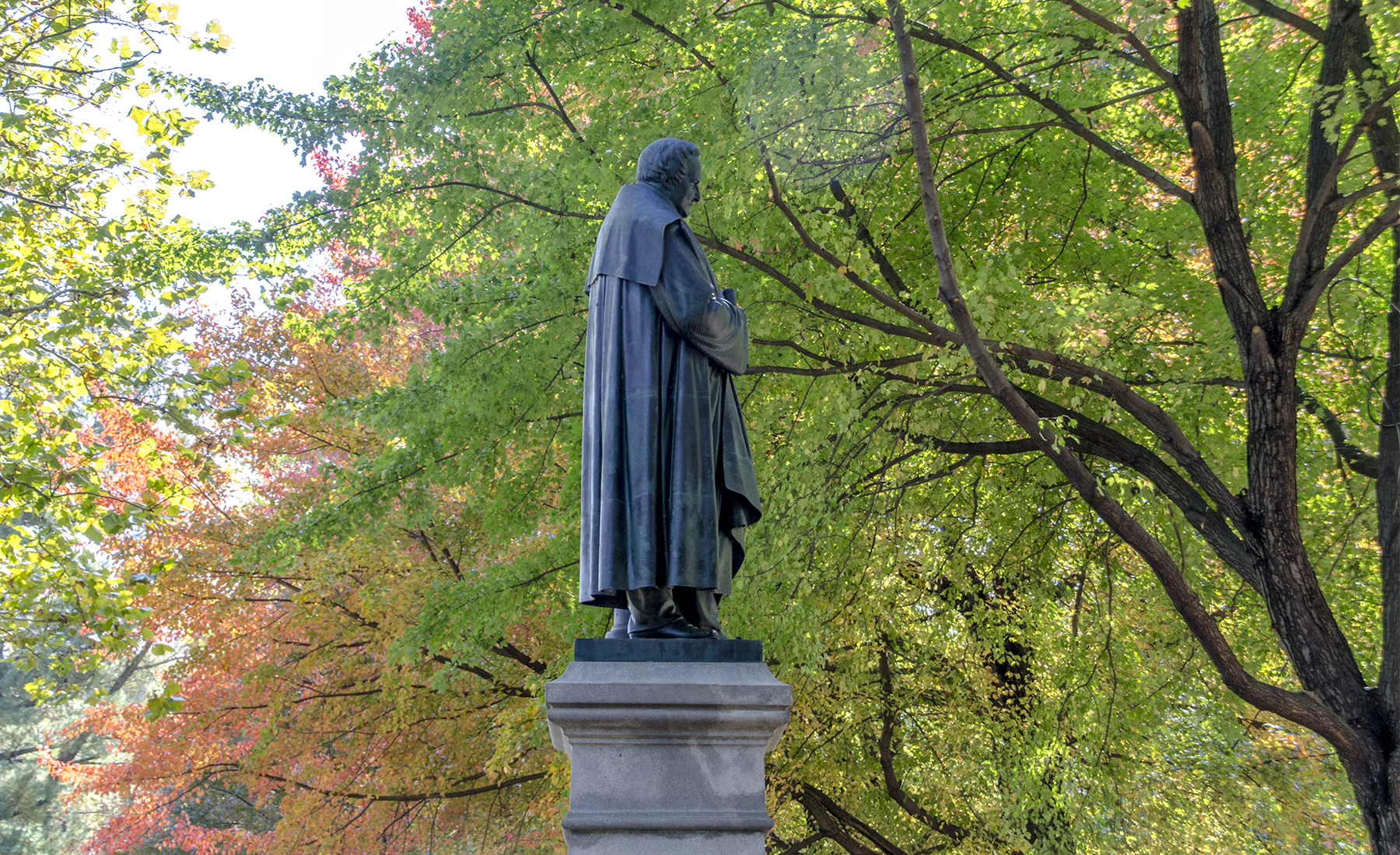
Records indicate this memorial was among the very first statues erected in Fairmount Park. Originally situated at 33rd Street and Girard Avenue, the sculpture was moved a century later in the late 1970s to West River Drive, now Martin Luther King Jr. Drive, where today it sits across from St. George and the Dragon.
Adapted from Sculpture of a City: Philadelphia’s Treasures in Bronze and Stone by the Fairmount Park Art Association (now the Association for Public Art) (Walker Publishing Co., New York, 1974)
RESOURCES:
